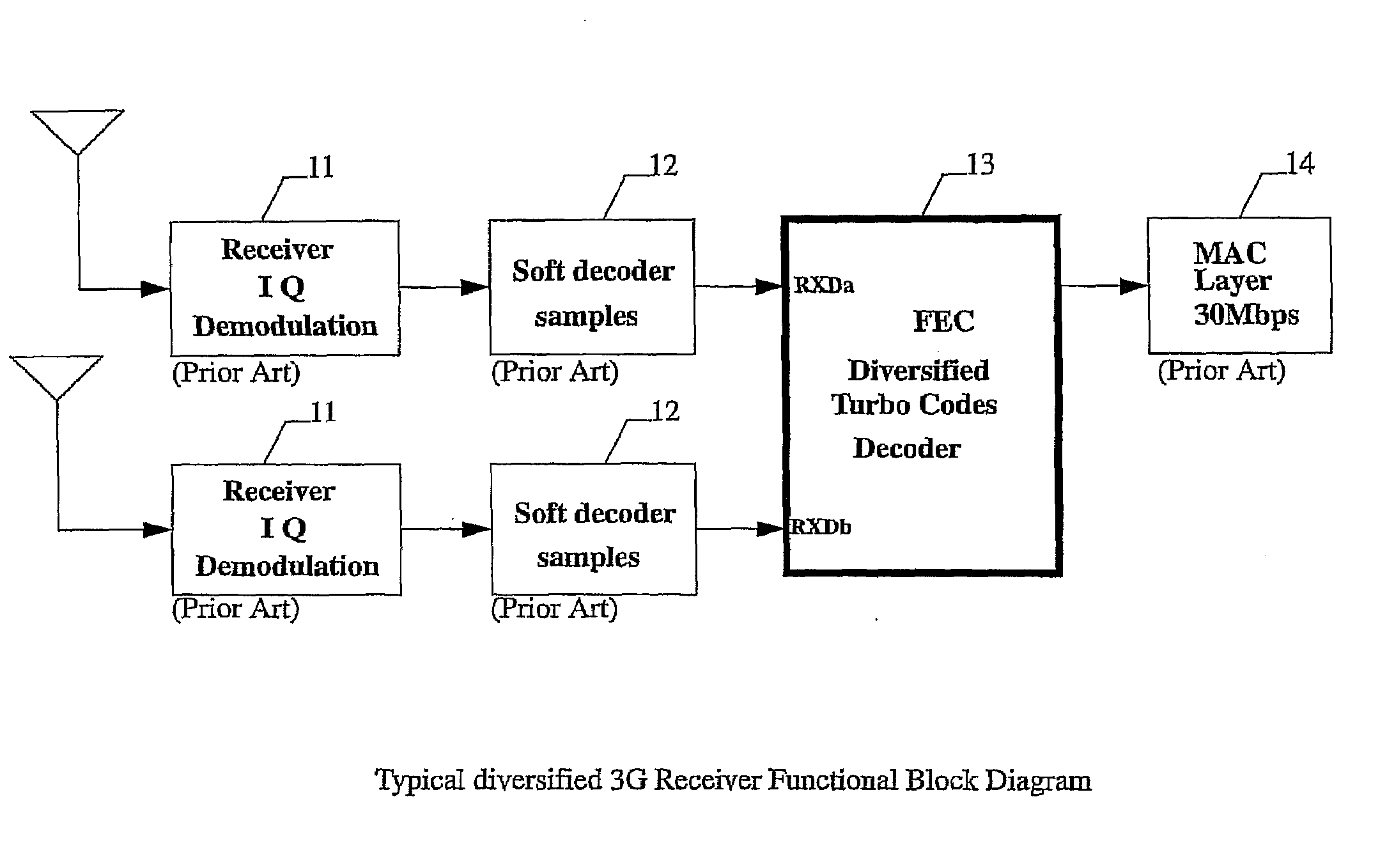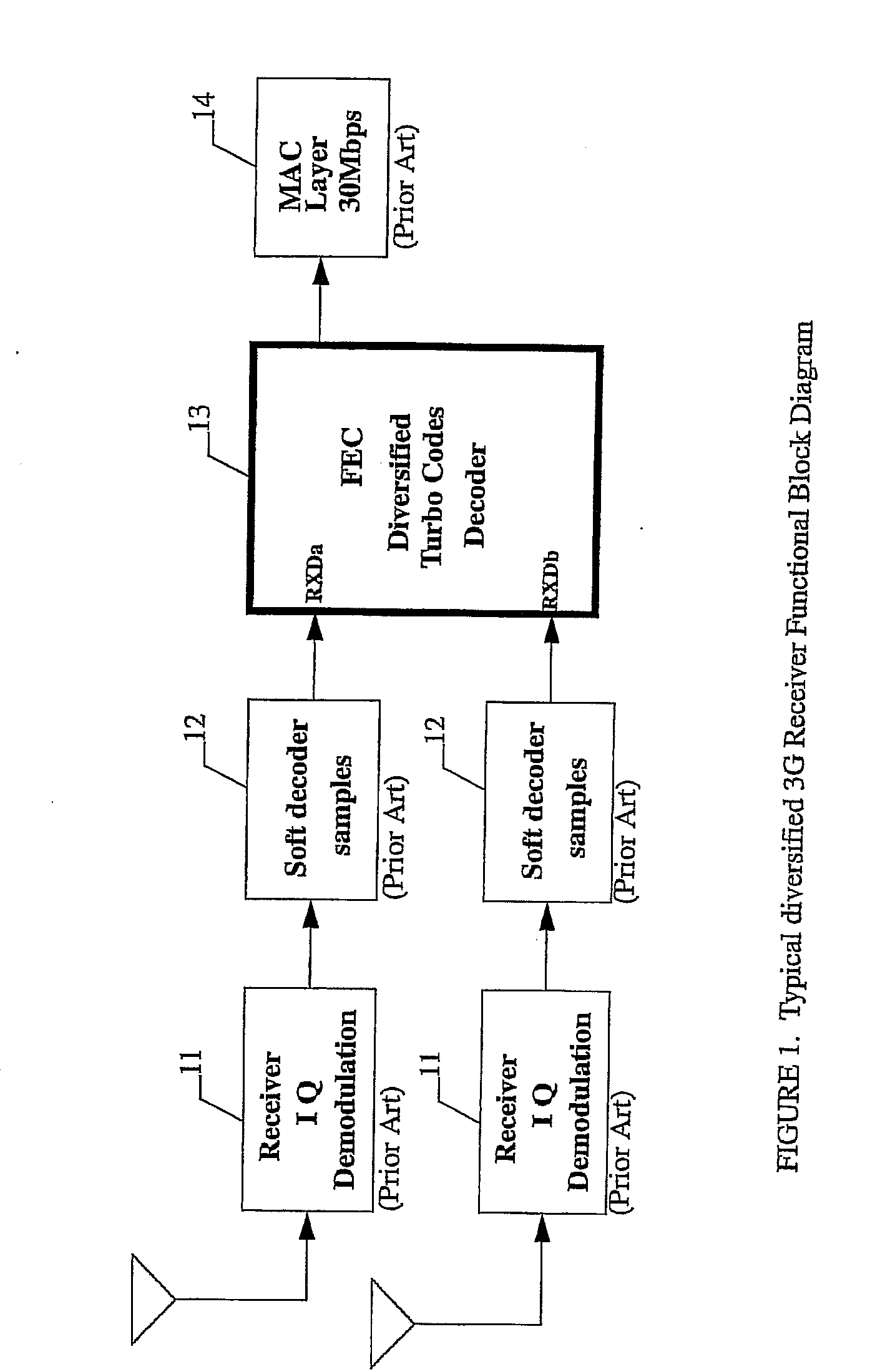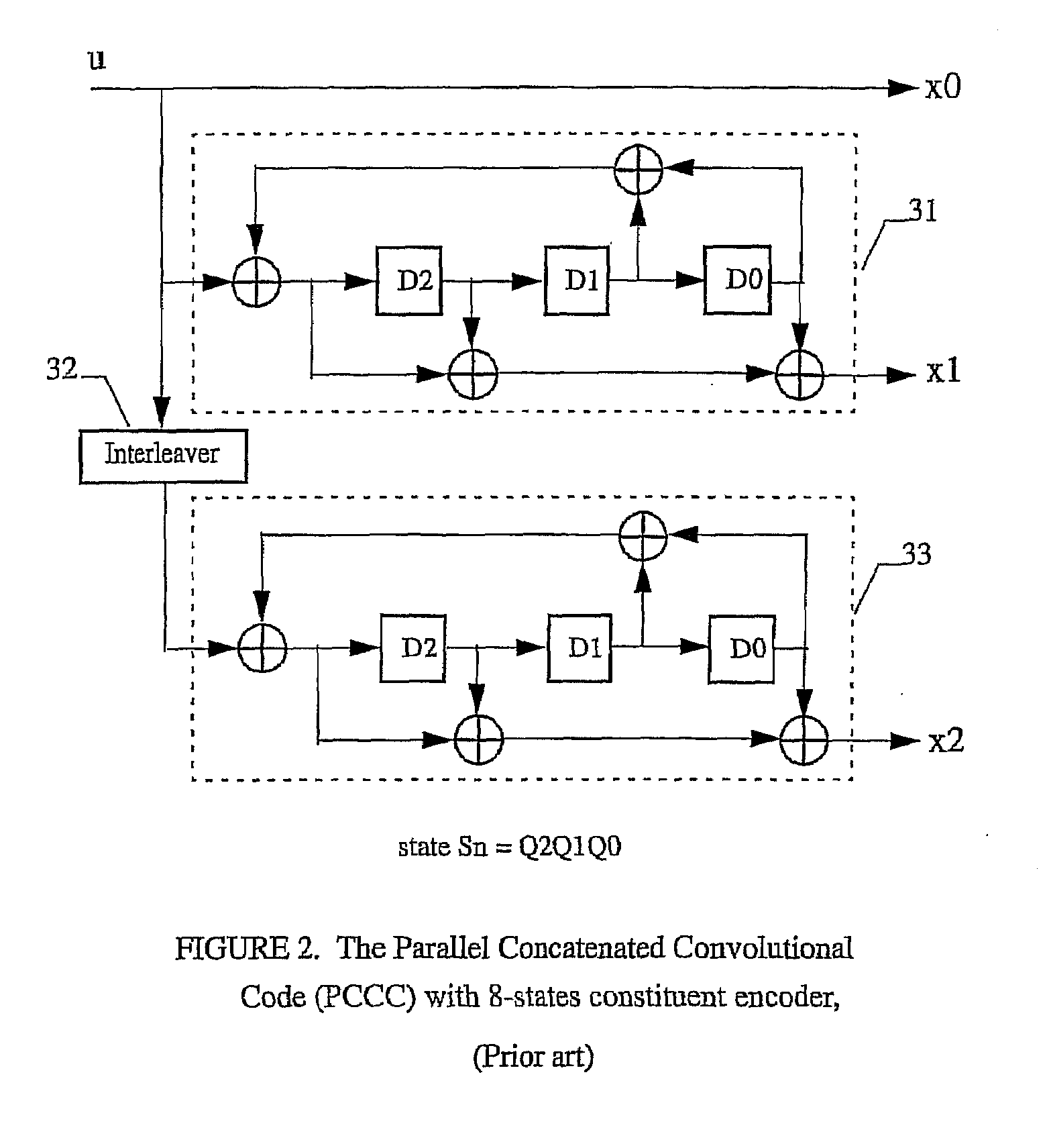High speed turbo codes decoder for 3g using pipelined siso log-map decoders architecture
a pipelined siso logmap and codes decoder technology, applied in the direction of coding, code conversion, fault response, etc., can solve the problems of long wait for decisions until the whole sequence, computational complexity of map algorithm, and implementation in semiconductor asic devices, so as to improve speed data throughput, reduce power consumption, and reduce costs
- Summary
- Abstract
- Description
- Claims
- Application Information
AI Technical Summary
Benefits of technology
Problems solved by technology
Method used
Image
Examples
Embodiment Construction
Turbo Codes Decoder
[0048]An illustration of a 3GPP 8-state Parallel Concatenated Convolutional Code (PCCC), with coding rate 1 / 3, constraint length K=4 is illustrated in FIG. 2. An implementation using SISO Log-MAP Decoders is illustrated in FIG. 3.
[0049]In accordance with an exemplary embodiment, a diversity processing Turbo Codes Decoder includes two parallel blocks 40a, 40b of Turbo Codes Decoders for each path of received data RXDa and RXDb. Each identical Turbo Codes Decoder block 40a, 40b has concatenated max Log-MAP SISO Decoders A 42 and B 44 connected in a feedback loop with Interleaver Memory 43 and Interleaver Memory 45. The Soft output of Turbo Codes Decoder block 40a is fed into the input of the Diversified Logic block 48. Conversely, the Soft output of Turbo Codes Decoder block 40b is fed-back into the input of the Diversified Logic block 48. The sum of the two outputs Z1, Z3 of the Turbo Codes Decoder block 40a, 40b is fed into the Hard-Decoder to generate output Y da...
PUM
 Login to View More
Login to View More Abstract
Description
Claims
Application Information
 Login to View More
Login to View More - R&D
- Intellectual Property
- Life Sciences
- Materials
- Tech Scout
- Unparalleled Data Quality
- Higher Quality Content
- 60% Fewer Hallucinations
Browse by: Latest US Patents, China's latest patents, Technical Efficacy Thesaurus, Application Domain, Technology Topic, Popular Technical Reports.
© 2025 PatSnap. All rights reserved.Legal|Privacy policy|Modern Slavery Act Transparency Statement|Sitemap|About US| Contact US: help@patsnap.com



